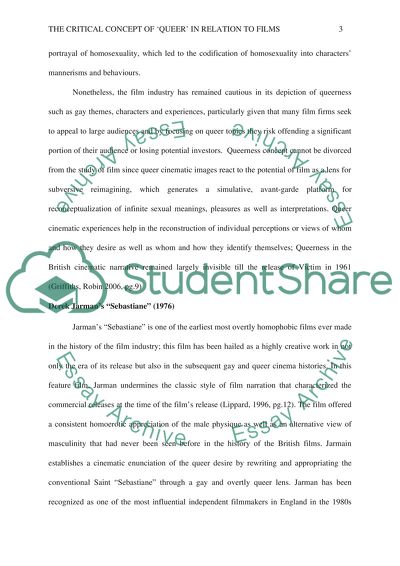Cite this document
(The Concept of Queer in British Films Report Example | Topics and Well Written Essays - 3250 words, n.d.)
The Concept of Queer in British Films Report Example | Topics and Well Written Essays - 3250 words. https://studentshare.org/visual-arts-film-studies/1829285-discuss-the-critical-concept-of-queer-in-relation-to-two-or-three-films-that-you-have-studied
The Concept of Queer in British Films Report Example | Topics and Well Written Essays - 3250 words. https://studentshare.org/visual-arts-film-studies/1829285-discuss-the-critical-concept-of-queer-in-relation-to-two-or-three-films-that-you-have-studied
(The Concept of Queer in British Films Report Example | Topics and Well Written Essays - 3250 Words)
The Concept of Queer in British Films Report Example | Topics and Well Written Essays - 3250 Words. https://studentshare.org/visual-arts-film-studies/1829285-discuss-the-critical-concept-of-queer-in-relation-to-two-or-three-films-that-you-have-studied.
The Concept of Queer in British Films Report Example | Topics and Well Written Essays - 3250 Words. https://studentshare.org/visual-arts-film-studies/1829285-discuss-the-critical-concept-of-queer-in-relation-to-two-or-three-films-that-you-have-studied.
“The Concept of Queer in British Films Report Example | Topics and Well Written Essays - 3250 Words”. https://studentshare.org/visual-arts-film-studies/1829285-discuss-the-critical-concept-of-queer-in-relation-to-two-or-three-films-that-you-have-studied.


